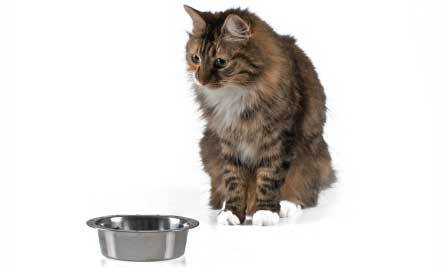Cats have gotten a reputation for being fussy about food. They may suddenly turn away from a favourite, or ignore new choices offered by an eager parent. If a cat refuses eat, there is usually a reason. The food may just not taste or smell fresh, or the cat may have underlying health problems that affect his appetite. He may eat all day, lacking interest in dinner. Here is what you need to know to keep your finicky feline friend well-nourished:
If you have been free-feeding your cat, allowing him to nibble all day, schedule a specific mealtime instead. Offer him whatever food he seems to enjoy, and if he has not eaten after 30 minutes, remove it. Repeat at the next mealtime. Eventually, your cat’s hunger will prevail. Because some cats do not like food from the refrigerator, warming it to room temperature may tempt his taste buds.
A higher-quality food may be more appealing to the cat because it will taste better than a more generic variety. Most cats have preferences for canned (wet) food or for dry food, so if you are exchanging one for the other, do so over several days or a week, to prevent digestive distress. Combine some of the former food with the new choice, gradually reducing the amount.
Cats will sometimes refuse food if their dishes are dirty. So wash kitty’s dish after every meal if it is canned food, or daily if he eats dry. His feeding spot should ideally be away from household traffic so he can eat without being disturbed.
Cats are sensitive to even small changes in their living environments. A move to a new home, the addition of another pet, a shift in your work schedule that results in a new mealtime, can all affect their eating habits. Calm your cat by establishing a comfortable routine that includes regular mealtimes and a clean, favourite feeding dish.
Why Won’t Your Cat Eat?
Aside from individual preferences about texture or temperature, most cats are happy to chow down on what is set before them. Some studies show that cats can develop an aversion to eating the same food for a long period, and require variety. But more often, food finickiness is learned from parents. Believing that cats get bored eating the same food, they switch foods, then try to entice the cat with “people food” when he or she ignores the new one. This shows the cat that if he rejects one food, he will be rewarded with something else.
It is the scent, not the flavour, that draws cats to food. Those intensely fish-meat-poultry aromas wafting from cat food bring felines flying at the first hint of the pop-top can. The smell of chicken or beef broth is especially enticing. Spooning some broth over dry food gives the cat an appetizing meal.
Few cats can resist a taste of freshly cooked chicken, liver or a pattie. You can offer this in small quantities as a special treat along with his regular cat food. Regular home-cooked meats should take into account the nutrients required for overall health.
A cat that goes without food can develop “fatty liver disease,” a potentially fatal illness from the liver metabolizing stored fat, within 48 hours. If your cat has not eaten at all in 24 hours, consult your trusted veterinarian at once. A good eater that suddenly has no interest in food may have a physical problem. The vet can check for issues such as gum disease, or a broken or decaying tooth that could cause pain while the cat’s chewing; lack of appetite can also be an early sign of pancreatic cancer or kidney problems.
Sometimes cats develop allergic reactions to or intolerance for ingredients in their food. Itching and sneezing, or vomiting and diarrhoea are possible signs of food allergies or intolerance. Once any health concerns have been addressed, the cat’s appetite should return.
Adapted from an article on Animal Planet




